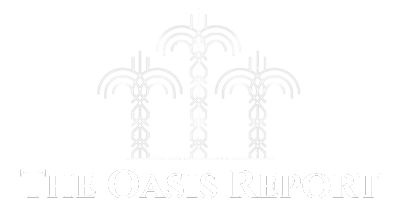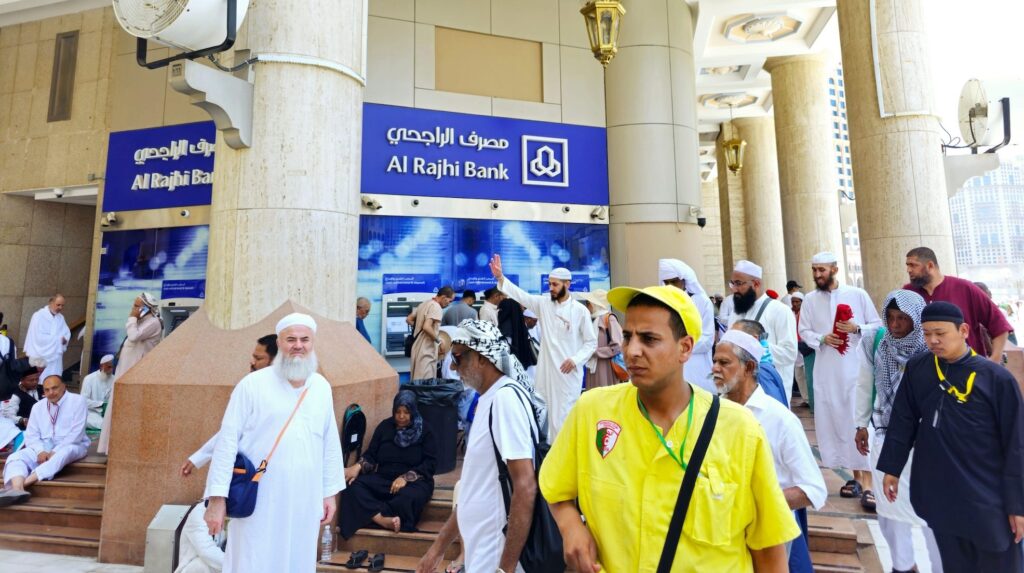Margins shrink with higher costs
Intensifying competition
Saudi Arabia’s big banks prospered in the first quarter thanks to soaring borrowing demand from companies. However, lending growth is likely to slow and margins are shrinking because of rising fund costs and intensifying competition.
The kingdom’s six largest banks by assets are Saudi National Bank, Al Rajhi Bank, Riyad Bank, Saudi Awwal Bank, Banque Saudi Fransi and Alinma Bank.
Their combined loan books grew 17 percent year on year and 5.7 percent versus the last three months of 2024, according to Citi.
“Growth is mainly coming from corporate borrowing although mortgage lending growth was also strong,” says Rahul Bajaj, director of Mena equity research at Citi in Dubai.
Corporations are mostly increasing their borrowing to support activities relating to government infrastructure projects, while mid-sized companies and small businesses are also taking out additional loans as they prosper in Saudi Arabia’s buoyant non-oil economy, explains Bajaj.
“We’re seeing drawdowns across the whole spectrum – it’s an ongoing trend that strengthened in Q1,” he says. “Loan growth was the big positive factor, while the one major negative was a more severe margin compression than we anticipated.”
Saudi banks’ first-quarter net interest margins fell by 5 basis points versus the fourth quarter of 2024, although this “was largely offset by very strong loan growth, while non-interest revenue growth was also strong,” says Bajaj.
Margins have shrunk due to rising funding costs; deposits increased only 5 percent year on year, far slower than loans expanded.
“There’s a big gap between loan growth and deposit growth, which the banks are bridging through other funding sources such as international issuances,” says Bajaj. “Those are more expensive than deposits, so are a drag on margins.
“That drag will continue, leading margins to decline further. I wouldn’t describe the gap between loan and deposit growth as problematic because banks don’t have difficulties accessing liquidity, it’s just that this liquidity is more expensive.”
Banks are also grappling with intensifying competition among lenders. One bank has described it as “price war for large corporate loans”, according to a note by Egypt’s EFG Hermes.
Overall, though, earnings growth remains solid. Al Rajhi Bank and Saudi National Bank, the two biggest by assets, reported quarterly profit increases of 34 and 20 percent respectively.
“It was a strong quarter for Saudi banks,” says Elena Sanchez-Cabezudo, head of Mena financials, equity research at EFG-Hermes in Dubai.
Her company’s research note describes Saudi National Bank’s quarterly performance as the “most impressive”, while Al Rajhi’s profit was in line with expectations and Riyad Bank – number three by assets – missed estimates due to lower-than-anticipated net interest margins.
The impact of lower-for-longer oil prices on Saudi Arabia’s spending plans and consequently loan demand is a concern, although banks’ year-on-year quarterly loan growth should remain at 11-13 percent for the next couple of years, says Bajaj.
“That should be achievable because there’s a strong pipeline of projects and many have fixed deadlines,” he explains.
Saudi banks’ cost of risk – the amount of money that lenders set aside to cover loan defaults as a percentage of the value of their loan books – is below normal levels.
“I’m expecting this to increase from current levels but should still remain benign,” says Bajaj.
Sanchez-Cabezudo uses the same word – benign – to describe the outlook for loan default levels in the Gulf.
“A bigger worry – the main worry – is the knock-on effects from lower oil prices,” she says. “That’s more of a risk to Saudi Arabia due to its spending plans and ambitious project pipeline.”
The US government forecasts per-barrel oil prices will average $66 in 2025 and $59 in 2026, below the 2024 average of $81.
Yet Saudi Arabia’s more diversified economy means that it is better equipped to withstand a prolonged slump in oil prices than it was during the last major crude price downturn about a decade ago.
Nevertheless, “investors’ perceptions are that UAE is more diversified than Saudi Arabia, which is reflected in banks stock price performance,” says Bajaj. “UAE banks have outperformed because they’re seen as more diversified and more resilient in the current environment.”



